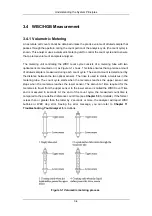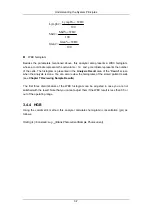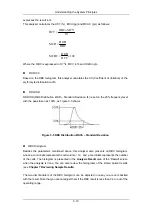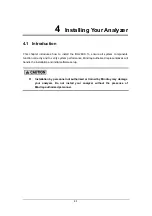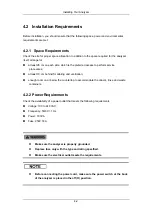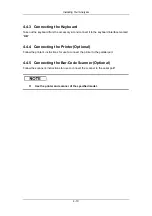
Understanding the System Principles
3-9
3.5.2 Measurement Principles
RBC/PLT
measurement
RBCs/PLTs are counted and sized by the impedance method, as Figure 3-4 shows. This
method is based on the measurement of changes in electrical resistance produced by a
particle, which in this case is a blood cell, suspended in a conductive diluent as it passes
through an aperture of known dimensions. An electrode is submerged in the liquid on both
sides of the aperture to create an electrical pathway. As each particle passes through the
aperture, a transitory change in the resistance between the electrodes is produced. This
change produces a measurable electrical pulse. The number of pulses generated indicates
the number of particles that passed through the aperture. The amplitude of each pulse is
proportional to the volume of each particle. Each pulse is amplified and compared to the
internal reference voltage channels, which only accepts the pulses of a certain amplitude. If
the pulse generated is above the RBC/PLT lower threshold, it is counted as an RBC/PLT.
Figure 3-4 Impedance method of counting and sizing
3.5.3 Derivation of RBC-Related Parameters
RBC
RBC (10
12
/L) is the number of erythrocytes measured directly by counting the erythrocytes
passing through the aperture.
MCV
Based on the RBC histogram, this analyzer calculates the mean cell volume (MCV) and
Summary of Contents for BC-2800
Page 1: ...BC 2800 Auto Hematology Analyzer Operator s Manual ...
Page 2: ......
Page 12: ......
Page 24: ...Using This Manual 1 12 Figure 1 4 High voltage warning label 7 High Voltage 7 ...
Page 62: ......
Page 91: ...Customizing the Analyzer Software 5 29 Figure 5 46 Saving changes ...
Page 92: ......
Page 170: ...Using the QC Programs 8 14 Figure 8 18 Transmission dialog box ...
Page 196: ......
Page 248: ......
Page 252: ......
Page 266: ......
Page 284: ...Appendices E 10 Hemoglobin Concentration ...
Page 286: ...P N 2800 20 28795 2 0 ...










